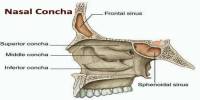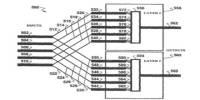Antibiotic-resistant superbugs are becoming an increasing problem and a novel copper surface that kills germs 100 times faster and more effectively than conventional copper could help.
The novel copper product is the outcome of a research collaboration between RMIT University and CSIRO, Australia’s national science organization, whose findings were just published in Biomaterials.
Because the ions emitted from the metal’s surface are harmful to bacterial cells, copper has long been used to battle several kinds of bacteria, including the common golden staph.
However, as RMIT University’s Distinguished Professor Ma Qian noted, this process is slow when conventional copper is used, and substantial efforts are being made by academics throughout the world to speed it up.
“A standard copper surface will kill about 97% of golden staph within four hours,” Qian said.
“Incredibly, when we placed golden staph bacteria on our specially-designed copper surface, it destroyed more than 99.99% of the cells in just two minutes.”
“So not only is it more effective, it’s 120 times faster.”
Importantly, said Qian, these results were achieved without the assistance of any drug.
“Our copper structure has shown itself to be remarkably potent for such a common material,” he said.
Drug-resistant infections are on the rise, and with limited new antibiotics coming onto the market, the development of materials resistant to bacteria will likely play an important role in helping address the problem. This new copper product offers a promising and affordable option to fighting superbugs, and is just one example of CSIRO’s work in helping to address the growing risk of antibiotic resistance.
Dr. Daniel Liang
Antimicrobial door handles and other touch surfaces in schools, hospitals, residences, and public transportation, as well as filters in antimicrobial respirators or air ventilation systems, and face masks, are among the possibilities for the new material, according to the researchers.
The researchers are now testing 3D-printed samples to see how effective the increased copper is against SARS-COV-2, the virus that causes COVID-19.
Other research suggests copper is particularly effective against the virus, prompting the US Environmental Protection Agency to authorize copper surfaces for antiviral use earlier this year.
Unique structure brings more copper to the fight
Dr. Jackson Leigh Smith, the study’s principal author, said the copper’s porous structure was crucial to its effectiveness as a quick bacteria killer.
The alloy was created using a particular copper mold casting method that arranged copper and manganese atoms into specified shapes.
The manganese atoms were subsequently removed from the alloy using a low-cost, scalable chemical technique known as “dealloying,” leaving pure copper with micro and nanoscale voids on its surface.
“Our copper is composed of comb-like microscale cavities and within each tooth of that comb structure are much smaller nanoscale cavities; it has a massive active surface area,” Smith said. “The pattern also makes the surface super hydrophilic, or water-loving, so that water lies on it as a flat film rather than as droplets.”
“The hydrophilic effect means bacterial cells struggle to hold their form as they are stretched by the surface nanostructure, while the porous pattern allows copper ions to release faster.”
“These combined effects not only cause structural degradation of bacterial cells, making them more vulnerable to the poisonous copper ions, but also facilitates uptake of copper ions into the bacterial cells,” Smith said. “It’s that combination of effects that results in greatly accelerated elimination of bacteria.”
According to CSIRO’s Dr. Daniel Liang, researchers around the world are working on new medicinal materials and gadgets that could help decrease the spread of antibiotic-resistant superbugs by reducing antibiotic use.
“Drug-resistant infections are on the rise, and with limited new antibiotics coming onto the market, the development of materials resistant to bacteria will likely play an important role in helping address the problem,” Liang said.
“This new copper product offers a promising and affordable option to fighting superbugs, and is just one example of CSIRO’s work in helping to address the growing risk of antibiotic resistance.”
The CASS Foundation in Melbourne, Australia, co-funded this work, which began as part of an RMIT-CSIRO PhD program. Patents have been filed in the United States, China, and Australia for the novel procedure.
















